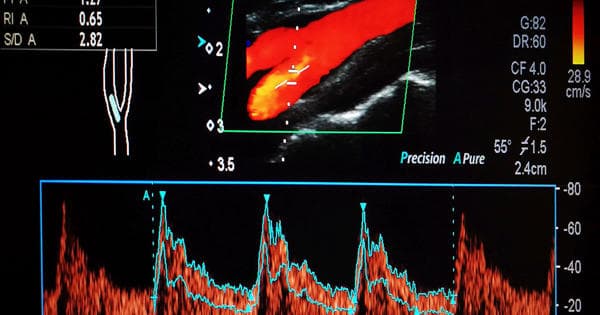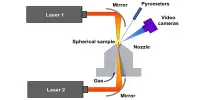Researchers developed usability and precision in vascular imaging
Researchers have developed a new X-ray contrast agent. Researchers at the University of Zurich have developed a new X-ray contrast agent. The contrast agent is easier to use and distributes into all blood vessels more reliably, increasing the precision of vascular imaging. This reduces the number of animals required in research experiments.
“Researchers at the University of Zurich (UZH), the National Centre of Competence in Research Kidney.CH and the Biomaterials Science Center of the University of Basel have now developed a novel X-ray contrast agent called “XlinCA,” with which capillaries can be made visible much more precisely using computer tomography.”
Various diseases in humans and animals — such as tumors, strokes, or chronic kidney disease — damage the blood vessels. For the analysis and remedy of cardiovascular and different illnesses, you will need to know the three-dimensional construction of blood vessels. Capillaries, the smallest blood vessels in the body, are particularly affected. This data of the precise anatomy of the capillaries in people and animals can also be essential for the primary analysis. The large surface area of the capillary network enables oxygen to be exchanged between the blood and the surrounding tissue, such as the muscles when we exercise or the brain when we think. It permits researchers to research illnesses that assault the blood vessels and consider new therapies.

Revealing the vascular structure
For the diagnosis and treatment of cardiovascular and other diseases, it is important to know the three-dimensional structure of blood vessels. This knowledge of the exact anatomy of the capillaries in humans and animals is also crucial for basic research. It enables researchers to investigate diseases that attack the blood vessels and evaluate new treatments. Researchers at the University of Zurich (UZH), the National Centre of Competence in Research Kidney.CH and the Biomaterials Science Center of the University of Basel have now developed a novel X-ray contrast agent called “XlinCA,” with which capillaries can be made visible much more precisely using computer tomography.
Previous methods often faulty
Beforehand, distinction brokers have been added to polymerizing plastic resins earlier than they have been injected into the blood vessels of euthanized animals. Nonetheless, it is vitally tough to fully fill out the fragile capillaries in numerous organs with viscous resins. “Without years of expertise utilizing the appropriate injection strategies, the capillaries are sometimes solely partially crammed, or lacking totally. As much as 1 / 4 of the ensuing pictures are due to this fact unusable,” says Willy Kuo, a postdoctoral researcher at the Institute of Physiology of UZH. By utilizing “XlinCA” as an alternative of different distinction brokers, as much as 25 p.c fewer animals could be wanted for experiments, states Kuo.
The fundamental drawback with standard strategies is that plastic and water don’t combine. This ends in water inclusions the place the distinction agent is absent, which causes disconnected vessel segments on the X-ray picture. Whereas the water-soluble X-ray distinction brokers utilized in drugs could not have this drawback, they can’t be solidified and leak by blood vessel partitions into the encircling tissue inside minutes.
Optimum results thanks to the custom contrast agent
Distinction brokers for medical use in people include small molecules and are comparatively easy to supply. “A customized distinction agent for ex vivo use was considerably tougher to synthesize since it’s made up of polymers – molecules bonded collectively in lengthy chains,” says Bernhard Spingler, professor at UZH’s Division of Chemistry. “XlinCA” has a number of benefits over beforehand used X-ray distinction brokers: It’s simple to make use of and permits full and uninterrupted vascular imaging. It additionally permits a number of organs and even complete animals resembling mice to be examined at a similar time.















